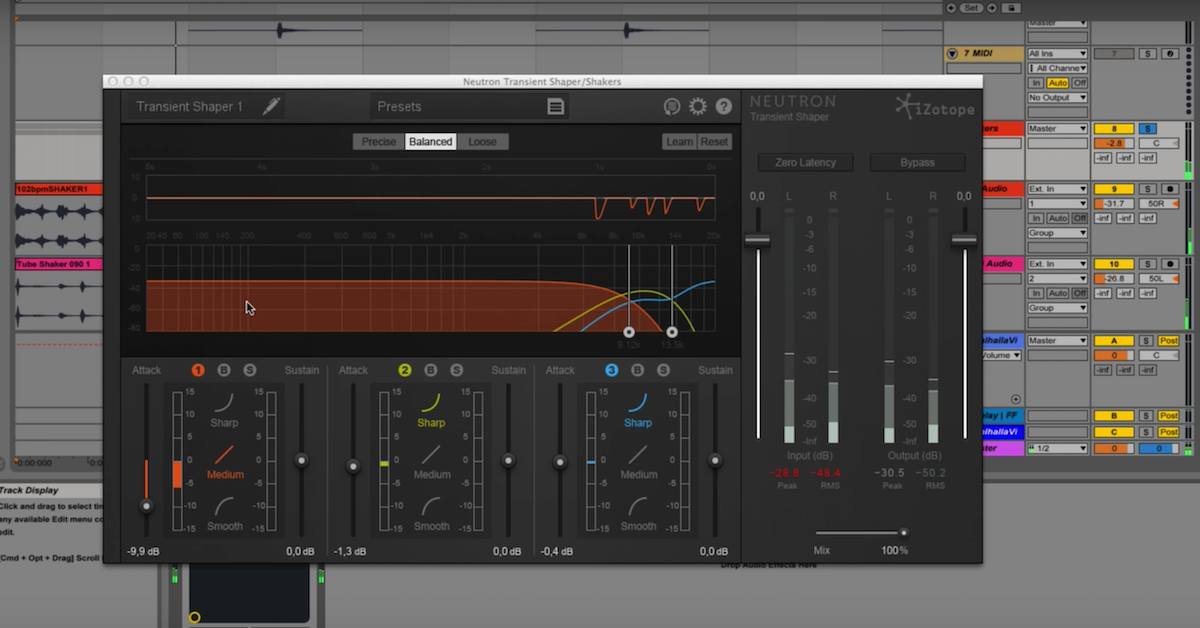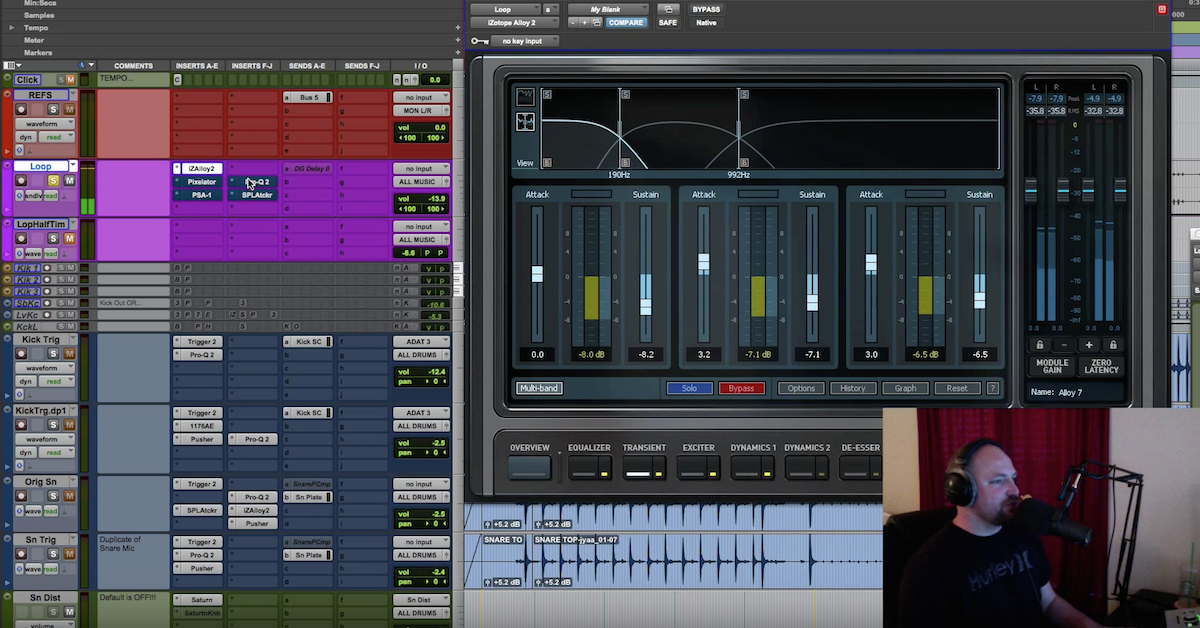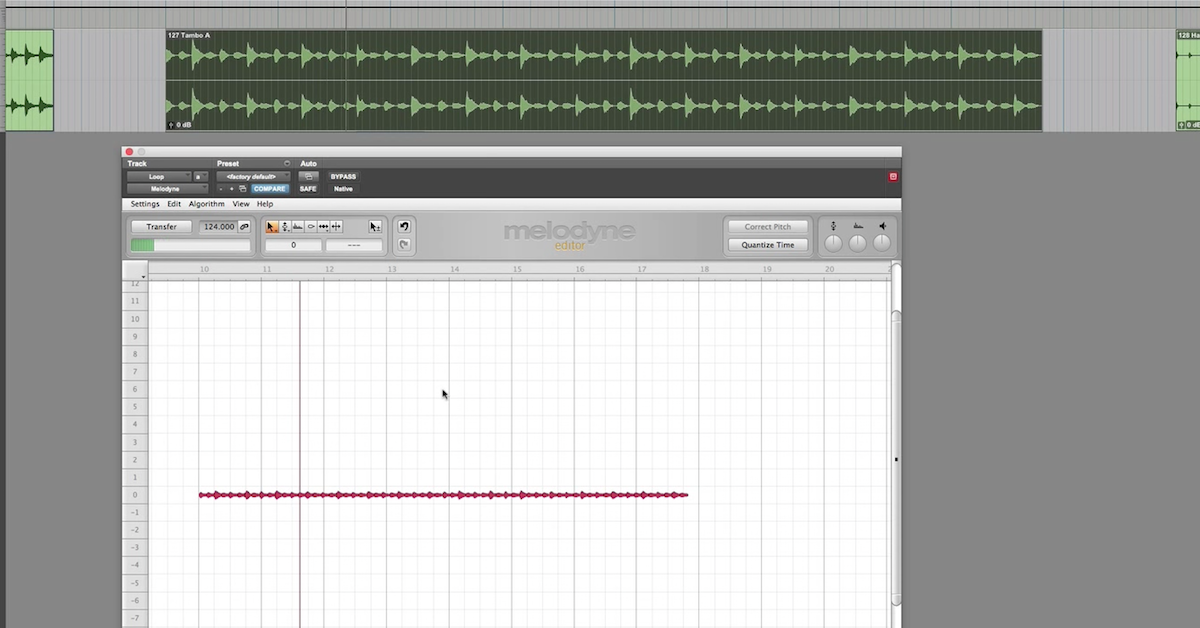6 Tips for Using Loops to Speed Up Production
Article Content
Sometimes when you’re producing a track, you just need a kick-start. You have the skeleton for a song, but it’s lacking some “vibe.” Nothing gets a party started like a great drum groove. Drums tend to herd the sheep. They unify the song.
Personally, I find a good drum groove influences many parts of a production. I’m less likely to add stuff when I feel the drum part is locked.
Do you have a major case of the “add me’s”? Where you just keep layering more and more parts on the song because it doesn’t seem full enough? When this happens, the first place I look at is the drum part.
1. Pocket Protector
There’s much to be said about the finesse and pocket of great drummers. You can spend a lot of time programming drums, but there’s a locked door that you won’t always have the key for: that element of a human interacting with a physical drum. There are more variables of expression than software can emulate.
Don’t get me wrong, virtual drummer software like EZdrummer 2 has come a long way. When I need to compose specific parts, I use it all the time. But when I’m looking to vibe off of a sound and feel, I prefer to use drum loops.
2. Process
When I work with loops, I tend to bend to the loop rather than make the loop bend to me. Meaning, after I have a sketch of the song, I add in drum loops before I record any instruments.
That’s because there are limited options with loops. Where many would see this as a drawback, I realize that too many options can lead to a wormhole where decisions never get finalized.
3. Reorganization
When you buy a loop library, you get a selection of feels at different tempos. For instance, I’m using a lot of libraries from The Loop Loft. When I downloaded the Aaron Comess Loop Bundle there was a subfolder with all the loops separated by grooves and tempos.
There is nothing wrong with this; however, after building a rather large library of loops, it makes finding grooves harder. In the long run, I’m more likely to search for a groove or tempo than I am to search for the library they came from.
My solution was to create parent folders based on the groove. If I want to find some funky grooves, I can go to my “funk” folder. If I’m looking for a shuffle, I can look in my “shuffle” folder. I’ve found this to greatly increase my productivity and reduce my frustration. I’m not changing the actual names of the loops. I’m simply moving them to a different folder.
Organization is everything to speeding up your production process.
4. DAW
Of course, you can use any DAW to manipulate or edit loops, but my preference is Ableton Live. I often use ReWire to connect it to Pro Tools in slave mode.
I often adjust the tempo of a drum loop to fit my production. I find the time-shifting options in Ableton to be superior to any other DAW because I can adjust tempos to a greater degree without artifacts.
Once I lock down my drum groove, I record the input from ReWire to a track. That way everything is eventually in Pro Tools. Ableton is my loop manipulator and a very powerful one at that.
5. Sound
When I use drum loops, they tend to sit in the mix incredibly well. This is partly due to the libraries I choose. I can’t say enough good things about The Loop Loft and Drums on Demand.
I find that I hardly have to tweak loops from either of these two companies. (Only if I want an effect like heavy compression or 60’s flanging.) I tend to like loops with some character—not sterile sounds or parts. I want to kick-start a production. I don’t want an under-seasoned steak. Give me spice!
6. Inspiration
One of the challenges of being a self-contained producer is getting fresh ideas. We all fall into the trap of feeling stuck and recycling the same ideas. Sometimes you need to hear other voices instead of the ones in your head. One of the joys of using loops is finding something you wouldn’t have thought of.
Digging into loop libraries is a good way to get a little spice in your production life. It’s the musical equivalent of buying fancy massage oils. Tip: loops are not a substitute. Your partner is NOT going to get excited if you bring a loop library into the bedroom.
If I use drum loops, I can often turn around a music cue for TV in about an hour and a half. That’s composed, recorded, and mixed. Of course, different types of production take different amounts of time. A songwriter production would take more time than an hour and a half. (Songs tend to be between 3-4 minutes where a TV cue is 60 seconds.)
But for either application, you don’t have to sacrifice good sound and feel to speed up your productions.





